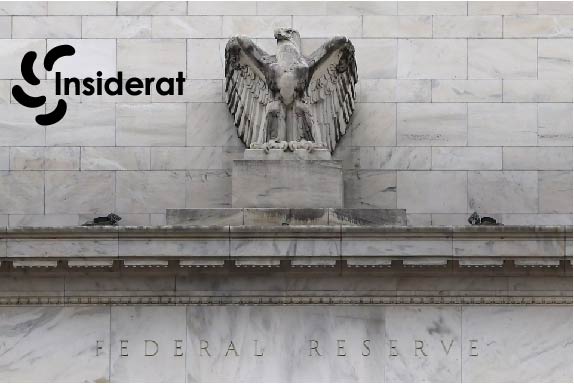which of these is a banking activity of the fed?
which of these is a banking activity of the fed? – As the backbone of the United States financial system, the Federal Reserve—often referred to simply as the Fed—plays a crucial role in steering the economy toward sustainable growth and prosperity. With its wide array of functions, understanding the Federal Reserve’s banking activities, the Federal Reserve Bank functions, and the overarching functions of the Fed reveals how integral this institution is to maintaining economic balance and responding to financial challenges.
Commencing its operations in 1913, the Fed has since been at the helm of the nation’s monetary policy, with a commitment to fostering a stable and secure financial environment. This initial dive into the Fed’s responsibilities will provide a window into the essential activities that make the Federal Reserve a pivotal force in managing the intricacies of the U.S. economy and preserving the confidence of both domestic and global markets.
Understanding the Federal Reserve System
At its core, the Federal Reserve System—established in 1913—has been instrumental in shaping the economic landscape of the United States. Often referred to as “the Fed,” this complex institution is structured as a network of regional Federal Reserve banks, each serving a specific geographical area within the country. One of the key activities of the Federal Reserve System has been to actualize its dual mandate: to promote price stability and to strive for maximum employment, making it a cornerstone in the pursuit of economic stability.
The Fed operates independently of the government while working closely with other financial entities, including commercial banks, the Treasury, and international institutions. The role it plays in Federal Reserve financial operations is multifaceted, helping to maintain a balance between economic growth and inflation through careful manipulation of monetary policy and interest rates. To illustrate the regional composition of the Federal Reserve System, the following table details the location and jurisdiction of each Federal Reserve bank, demonstrating the scope of their influence.
| Federal Reserve Bank | Location | District Covered |
|---|---|---|
| Federal Reserve Bank of Boston | Boston, MA | First District |
| Federal Reserve Bank of New York | New York, NY | Second District |
| Federal Reserve Bank of Philadelphia | Philadelphia, PA | Third District |
| Federal Reserve Bank of Cleveland | Cleveland, OH | Fourth District |
The effectiveness by which the Federal Reserve conducts its financial operations is a testament to the solid architecture upon which it was constructed. Its design enables it not only to respond to domestic economic issues but also to play an integral part in international financial stability. The activities of the Federal Reserve system extend into international markets as well, underlining its relevance in today’s interconnected global economy. This section has aimed to provide a foundational understanding of the structure and ethos of the Federal Reserve System—a prelude to examining its specific functions in subsequent segments.
Core Banking Functions of the Federal Reserve
At the heart of the American financial system is the Federal Reserve, whose tasks are integral to maintaining economic stability and encouraging growth. One of the primary banking activities of the Fed encompasses the management of the nation’s money supply. This critical function employs powerful monetary policy tools that actively shape the health of economic activity. With initiatives such as open market operations, the Federal Reserve makes calculated adjustments to the monetary base, directly affecting interest rates and liquidity.
Another significant component of the Federal Reserve’s banking tasks is the setting of reserve requirements. By mandating the fraction of depositors’ balances that commercial banks must hold in reserve and not lend out, the Fed ensures a buffer against bank runs, orchestrating a balance between maximizing the efficiency of the banking system and safeguarding it against potential crises. These layers of functions by the Fed help navigate the economy through the tumultuous seas of global finance, ensuring smoother sailing for businesses and consumers alike.
Below is a table summarizing some of the Federal Reserve’s core functions and how they contribute to the overall economic health and banking system liquidity:
| Function | Description | Impact on Economy |
|---|---|---|
| Open Market Operations | Purchase and sale of government securities in the open market to regulate the money supply. | Directly influences short-term interest rates and the amount of credit available. |
| Reserve Requirements | Determination of the minimum amount of reserves each bank must hold to customer deposits. | Controls the lending capacity of commercial banks and ensures banking system stability. |
| Discount Rate Setting | Interest rate charged to commercial banks for short-term loans from the Federal Reserve. | Serves as a benchmark for other interest rates; influences the cost of borrowing and spending. |
How the Fed Manages Financial Stability
Amid a complex economic landscape, the Federal Reserve’s financial operations play a central role in ensuring the financial stability of the United States. Taking a multi-pronged approach to managing systemic risks, the Fed’s oversight extends to evaluating the health and stability of financial institutions to withstand economic disturbances. One of the key functions of the Fed includes conducting thorough stress testing of banks, designed to assess their capability to endure financial shocks such as sudden asset devaluation or liquidity constraints.
Moreover, the Federal Reserve employs its monetary policy tools with precision to curtail inflation and foster economic growth that is robust yet sustainable. Adjusting the federal funds rate allows the Fed to influence borrowing costs, consumer spending, and investment, demonstrating its central role in shaping the economic direction of the country.
| Monetary Policy Tool | Purpose | Effect on Financial Stability |
|---|---|---|
| Interest Rate Targeting | Control inflation and stimulate economic growth | Reduces volatility and ensures predictable market conditions |
| Stress Testing of Banks | Assess financial resilience of banks in adverse scenarios | Ensures banks can withstand shocks, preserving system stability |
| Open Market Operations | Assess the financial resilience of banks in adverse scenarios | Promotes appropriate liquidity levels, reducing systemic risk |
| Forward Guidance | Communicate future policy intentions | Informs stakeholders, aligning expectations and reducing uncertainty |
Through these vigilant and strategic Federal Reserve financial operations, the Fed not only stabilizes the current financial ecosystem but also anticipates future economic shifts to mitigate potential risks. The functions of the Fed are ultimately designed to act as a guardian of the economy, providing a safe and efficient financial framework for all participants.
Conclusion
Throughout this article, we’ve uncovered the multifaceted nature of the Federal Reserve System and its far-reaching impact on the economy. By orchestrating critical Federal Reserve banking tasks, the Fed not only shapes the financial markets but also underpins the broader economic narrative of the nation. It’s through its adept handling of fed banking operations, from monetary policy to regulatory oversight, that the system ensures economic stability.
The significance of the Federal Reserve’s role cannot be overstressed. Their actions bear consequences that ripple across the global economy, influencing everything from market interest rates to international trade dynamics. By demystifying the Fed’s functions, we equip ourselves with the knowledge to understand market fluctuations and economic trends.
As the economic landscape transforms, so too must the Federal Reserve evolve to meet new challenges. The resilience and adaptability of the Fed bear testament to its essential position in not just American but global finance. The continuous evolution of the Federal Reserve’s strategies and operations are critical in navigating the uncertain waters of future economic scenarios.
about:blank

